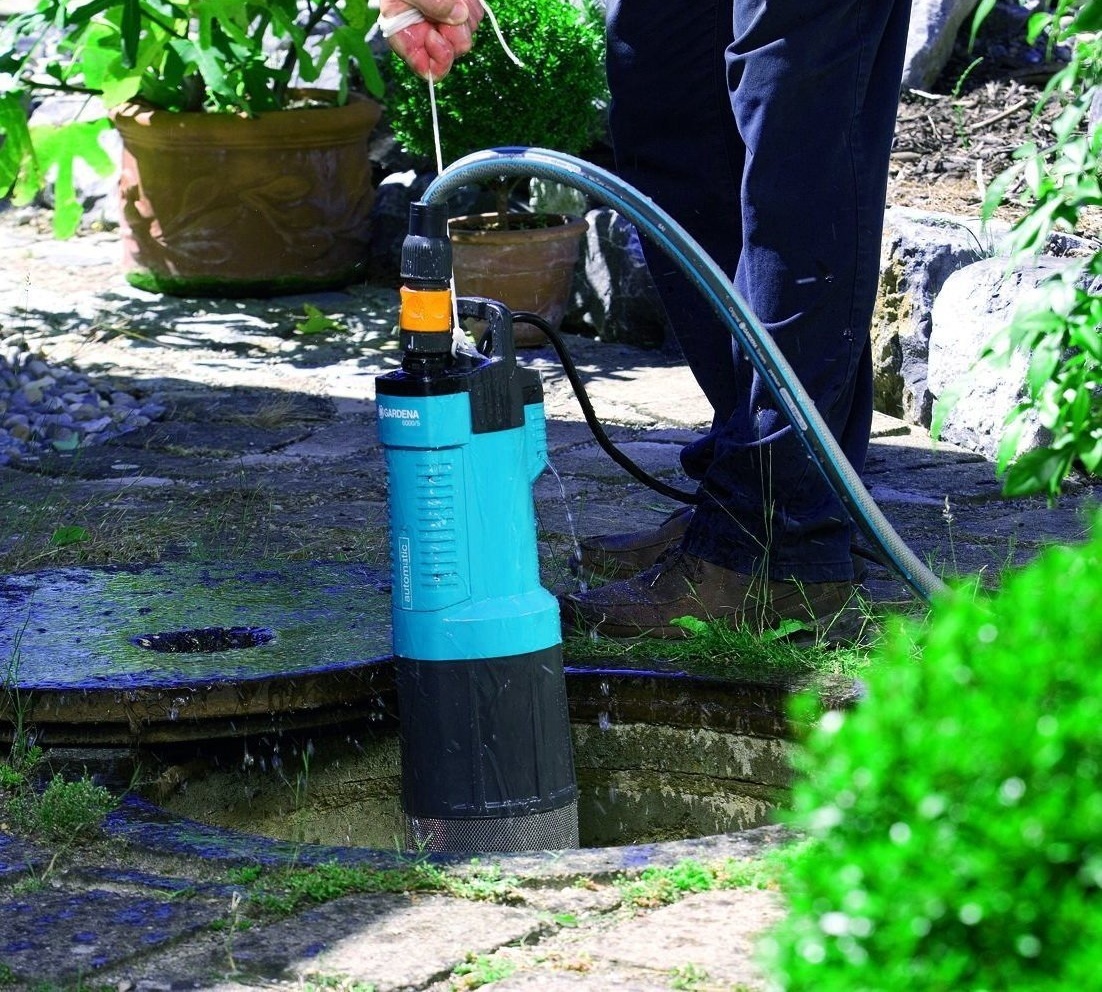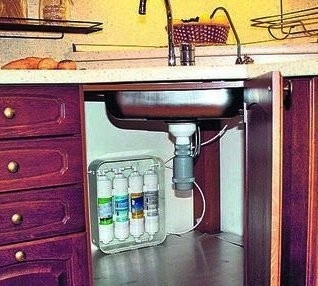How to choose a garden pump for pumping dirty water: a comparative overview of suitable units
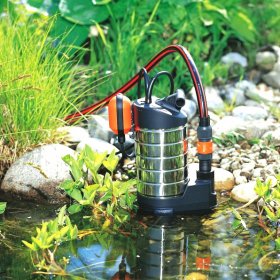
Owners of private homes often have to independently solve the problem of pumping dirty water. For example, in the spring, when the flood floods the basements, few call utility services, because the cost of pumping is not cheap. But you don’t apply buckets either, because in the first days water arrives faster than it is scooped up. The only salvation option is dirty water pumps, which can pump out not only the basement, but also water in their own pond, pool. They can even water the garden by throwing a hose into a nearby river. Well or borehole units for these purposes will not work, because they work only with clean water. Therefore, it is necessary to stock up in advance with pumps designed specifically for pumping dirty liquids.
Units with which clean water is pumped are not designed to enter solid particles. From this, the system becomes clogged and quickly deteriorates. In pumps for pumping dirty liquids this moment is taken into account, and solid particles from 2 to 5 cm in size easily pass through the system, being thrown into the hoses together with water. Such pumps are called drainage.
The instructions for the specific model indicate what size of solid particles they are designed for. So, there are pumps that pump out only slightly contaminated water containing a small amount of sand. There are those who successfully cope with small pebbles. A separate type of aggregates was created for pumping water with feces and long fibers, such as hair, threads, etc. Although they are referred to drainage systems, they are allocated to a special group - fecal ones.
All dirty water garden pumps are divided into 2 groups depending on the method of water intake: surface and submersible.
Features of working with a surface unit
The surface pump for pumping dirty water is designed for lightly contaminated liquids with solid particles of not more than 1 cm. It is placed near a fence on a solid platform, dropping only a sleeve (inlet pipe) to the bottom of a reservoir or flooded room. These units are characterized by low power, so it is advantageous to buy them for periodic use. For example, a couple of times a season to pump out water from the basement or once a week to water the garden. Daily use quickly destroys systems.

Surface pumps in plastic cases are much quieter than metal ones, but they are afraid of falls and serve a shorter life.
Of the advantages, it is worth noting the ease of installation, operation. These systems can be installed almost everywhere where there is a power grid nearby. But keep in mind that surface pumps are not designed for great depths. The optimal depth at which they are able to work without overload is about 5 meters. Models in plastic cases are cheaper, but inferior in reliability to metal systems. True, the latter are buzzing harder at work.
A slight inconvenience to surface pumps is that they are placed on the street, and if you have to pump out water at sub-zero temperatures, there is a risk of the device freezing. To avoid this, pumps try to put in nearby buildings - a garage, a barn, etc.
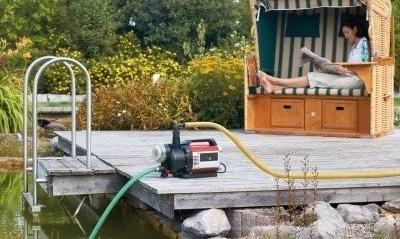
When used in winter, surface pumps should be hidden or hidden in the room to avoid freezing of the system
Submersible pumps: selectable by power
Submersible pumps operate on a different principle than surface pumps. They are completely lowered to the bottom of the source of water intake. These units are able to pump out heavily contaminated water, in which there are a large number of large particles (up to 5 cm). Due to the wide working chamber of the mechanism, all garbage freely passes out with the water, without causing clogging of the unit.
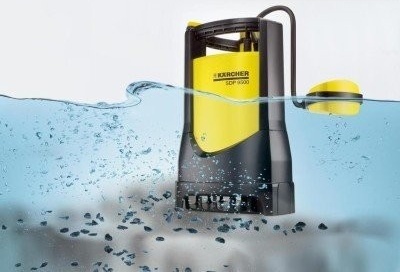
The suction hole located at the bottom of the drainage pump allows you to pump out water from the basement almost completely, because the device is placed directly at the bottom
Submersible pumps for dirty water are divided into domestic and industrial. Naturally, for country needs industrial options should not be taken. They have high capacities and productivity, which will not be in demand within one section. But the energy consumption is much higher than in household systems.
When choosing this type of pump, you should pay attention to the following:
- The location of the suction port.
If it is located at the bottom of the pump, it means that you can almost completely pump out water from the basement. But in reservoirs, the unit is not immersed at the very bottom, otherwise it will capture a large amount of sludge. Therefore, they put the pump on a special stand or find models where the suction hole is located at the top of the system.
- The presence of a float for automatic shutdown
Automation increases the cost of the pump, but it is needed in order to prevent the motor from overheating if the unit pumps out all the water and starts to run dry. Thus, the owners do not have to stand near a working pump until he pumps the room completely. The float will itself react to the changed water level and will command the motor to shut off.
- Scope of use of the pump
It is important to determine in advance what you plan to do with this pump. If you only water the garden and drain the flooded rooms, then a model that pumps out about 120 liters per minute is enough. But if you plan to use the unit in the drainage system, then you need a more powerful model.
Fecal pumps: for especially polluted water
If you need a universal water pump that can be used for dirty water, and for domestic wastewater, with feces, paper, hair and other bulky waste, then you should look among the fecal models. They work on the same principle as submersible systems, but have a very important adaptation. This is a grinder that crushes all solid particles into small fractions and only then passes them into the mechanism. You can calmly lower the system to the bottom of a silty pond, from where not only water will flow to your garden, but also fertilizer in the form of silt and shredded water boogers.

Fecal pumps are created from high-strength materials that are not afraid of chemical decomposition reactions and aggressive environments, so they last almost forever
In addition, such units are created from materials of increased strength, which are not afraid of an aggressive environment, which means that their service life is higher than that of conventional submersible pumps.
If there is no electricity in the cottage, then the only pump-type option may be the only option for a dirty water pump. They are sold ready-made, cost no more than 150 cu, but you need to pay attention to what size of solid particles they are designed for.
